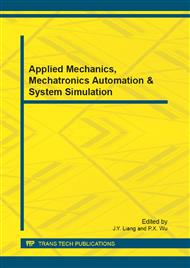p.32
p.36
p.40
p.48
p.52
p.56
p.60
p.64
p.68
Cytotoxicity and Immunotoxicity Assessment of NiO Nanoparticles Using the Chlamydomonas reinhardtii
Abstract:
Little is known about the potential behavior and ecotoxicity of nanoparticles to aquatic organisms. The cytotoxicity and immunotoxicity of NiO-Nanoparticles and Chlamydomonas reinhardtii. It shown that the mitochondrial activity was gradually reduced significantly at the different exposure concentrations for NiO nanoparticles. NiO nanoparticles had a similar effect on membrane integrity as that observed for inhibition of cellular metabolic activity, with a significant reduction in membrane integrity. The NiO nanoparticles exhibited a significantly higher degree of BOD compared to the control group. NiO nanoparticles induced increases in MDA levels with incubation time. A significantly higher percent of cells with mitochondrial depolarization was observed when cells were exposed NiO nanoparticles. NiO nanoparticles significantly elevated ROS levels more than four fold at the highest concentration and the lysozyme activity was significantly increase at all the exposure concentrations and incubation times.
Info:
Periodical:
Pages:
52-55
Citation:
Online since:
September 2012
Authors:
Price:
Сopyright:
© 2012 Trans Tech Publications Ltd. All Rights Reserved
Share:
Citation:


